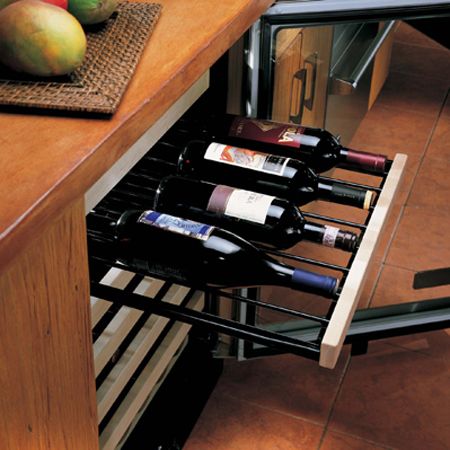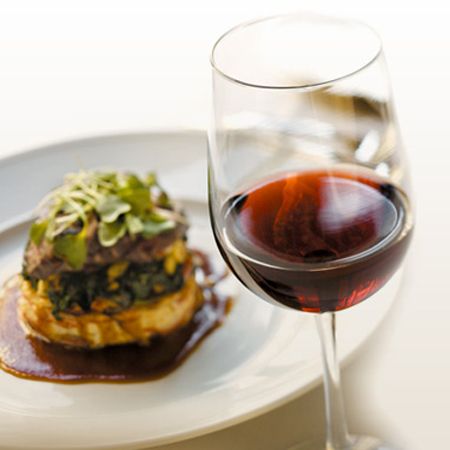Choosing Wine For the Thanksgiving Table

Thanksgiving is perhaps the quintessential American holiday, and with almost every table in the country graced with turkey, the inevitable question becomes which wines should we serve with the bird? Patriotism would like to have us serving American wines with this most American of holidays, and for many years this was the direction that I would go at the table, often choosing wines like Grgich Hills or Mount Eden chardonnays, or pinot noirs from the likes of Calera, Adelsheim or Saintsbury. However, that was in the pre-global warming days, and the change in climate has assisted in a recent change in style of many California wines, with higher alcohol levels and an emphasis on riper fruit tones, making many of these a bit too heady to accent the holiday turkey. The move to the “fruit bomb” school of winemaking at so many top addresses in Napa and Sonoma has pushed these wines from my holiday table, as they just do not deliver a complementary panoply of flavors and aromatics to set off the turkey in its most shining light. They certainly have their place, but come Thanksgiving time these days, I tend to look in other directions.
At my Thanksgiving table, I always like to have options available with both red and white wines, as turkey is a bird that works equally well with either. For whites, I still love the flavors of chardonnay with turkey, but I do not want the wine to be too tropical in profile, or too high in alcohol. For this reason I reach instinctively for the wines of France’s Chablis region, where the pronounced minerality of the soils here tame the tropical elements of the chardonnay grape, and provide a brilliant sounding board to the bird. The most famous names in Chablis are Domaines Raveneau and Vincent Dauvissat, and any of their wines will make the turkey sparkle. But there are a myriad of other producers in Chablis that one can also look to, as the region is in the midst of a real renaissance, and producers such as William Fèvre, Jean-Marc Brocard, Joseph Drouhin, Louis Michel et Fils, Nathalie and Gilles Fèvre, Gérard Tremblay, Frédéric Gueguen and Domaine Séguinot-Bordet can all be counted on for outstanding Chablis. If possible, try to find wines from the 2004 vintage, which is drinking beautifully, or the 2006 vintage. Among well-balanced California chardonnays, I would recommend the wines of Chateau Montelena, Forman and Ramey, in particular.
Another white that I love with turkey is riesling, and usually from Germany, with just a whisper of residual sugar. These are particularly fine if the stuffing or side dishes may incorporate a bit of sweetness as well, which can make a fully dry white wine taste a bit awkward. Focus on German rieslings from the Spätlese level of ripeness, which work perfectly. Top producers to look for include Geltz-Zilliken, Reinhold Haart, Willi Schaefer, Fritz Haag, Schaefer-Fröhlich, Maximin Grünhäuser, and the king of the hill, Egon Müller. Germany has had a great string of vintages in the last few years, but I would try to focus on 2002, 2004, 2005 and 2007 for this holiday.
Another varietal with a great affinity for turkey is pinot gris, and here the options are quite wide. The grape has a lovely combination of apple fruit, minerality and a touch of nuttiness that works perfectly with the bird. Pinot Grigio, as the grape is called in Italy, works beautifully, as do top examples from Alsace producers such as Trimbach, Albert Mann and Dirler. Pinot Gris also does admirably well in Oregon, allowing a pairing of American wine with Thanksgiving.
In the realm of red wines, remember that with turkey, the lighter the red wine, the better. Big, powerful and extracted reds tend to clash with turkey, so grapes that are less concentrated work best. Amongst these, pinot noir is the king. From the U.S. I tend to gravitate towards pinots from Sonoma County and Oregon for my turkey pairings, with producers such as Williams-Selyem, Rhys Vineyards, Alesia, and Domaine Drouhin amongst my favorites (Domaine Drouhin’s chardonnays are also one of the few U.S. chards that works great with turkey). If you prefer your pinot noir from Burgundy, try to focus in on the southern half of the region, known as the Côte de Beaune, which tends to produce wines that are more red fruity in personality. Villages such as Savigny-les-Beaune, Auxey-Duresses, Volnay, Beaune, Chassagne-Montrachet (best-known for its white wines, but making some real sleeper reds), Chorey-les-Beaune and Pernand-Vergelesses are wonderful options, particularly in vintages such as 2000, 2002 and 2006. Look for producers such as Chandon de Briailles, Domaine Lafouge, Camus-Bruchon, Jean-Marc Pavelot, Joseph Drouhin, Marquis d’Angerville, Michel Lafarge, Château de Chorey-les-Beaune, Michel Gaunoux and Ramonet.
Beaujolais is also a classic pairing with turkey, and there are an amazing number of options available in the current market of great producers and top vintages. The vintages to focus on are the 2006s for this Thanksgiving, and I tend to prefer wines from the top “cru Beaujolais” villages such as Morgon, Juliénas, Moulin-à-Vent, Fleurie and Côte de Brouilly. Top producers include Louis et Claude Desvignes, Nicole Chanrion, Domaine Chignard, Michel Tête, Clos de la Roilette, Pierre Chermette and Jean-Paul Brun. Virtually any wine from these producers in 2006 will marry beautifully with the bird, and produce a very memorable and highly enjoyable Thanksgiving wine pairing. And this year’s Beaujolais Nouveau is also a consistently reliable pairing- none the worse for wear and always a festive way to mark the holiday.


